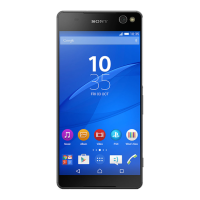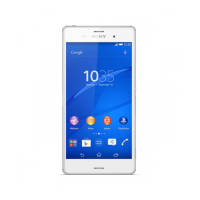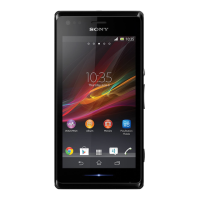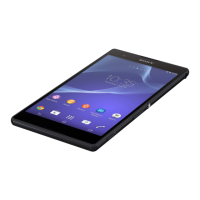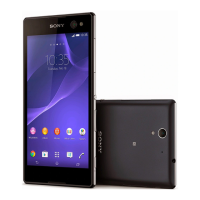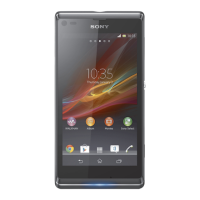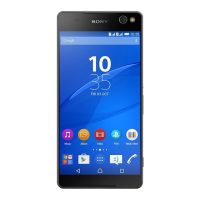
Do you have a question about the Sony Xperia C5 Ultra Dual and is the answer not in the manual?
| Brand | Sony |
|---|---|
| Model | Xperia C5 Ultra Dual |
| Category | Cell Phone |
| Language | English |
Provides information about the device, its software version, and potential differences.
Shows a diagram of the device identifying its main components and ports.
Details the physical setup of the device, including SIM and memory card insertion.
Guides on powering on/off the device and initial setup procedures.
Explains the benefits and necessity of a Google account for device functionality.
Details available screen lock types: Swipe, Pattern, PIN, and Password.
Explains the Smart Lock feature for automatic device unlocking.
Instructions for locking and unlocking SIM cards using a PIN.
Explains basic touchscreen gestures like tapping, touching, and holding.
Introduces the Home screen layout, panes, and navigation.
Details how to access, navigate, and search applications.
Explains how to add, resize, move, and remove widgets on the Home screen.
Instructions for accessing and closing the notification panel.
Controlling notification display and content when the screen is locked.
Explains various status icons for connectivity and device status.
Instructions on charging the device using the correct charger and cable.
Managing battery consumption and viewing usage statistics.
Information on checking for and installing software updates.
Guide to downloading apps and games from the Google Play Store.
Enabling and downloading apps from sources other than Google Play.
Using the Google Chrome browser for web access and search.
Connecting to Wi-Fi networks for internet access.
Methods to share mobile data via USB, Bluetooth, or hotspot.
Monitoring and managing mobile data consumption and settings.
Syncing data like contacts and calendars with online accounts.
Setting up corporate email and calendar synchronization.
Adjusting device volume, ringtones, and notification sounds.
Managing notification silencing and scheduling Do Not Disturb mode.
Adjusting screen brightness, idle time, and smart backlight.
Using the virtual keyboard, Gesture input, and Phonepad.
Using voice commands to input text into the device.
Customizing keyboard layout, languages, and suggestions.
Instructions for dialing numbers, using smart dial, and making calls.
How to answer, decline, or manage incoming calls.
Setting up call forwarding to another number or service.
Making emergency calls, even without a SIM card.
Methods for moving contacts from other devices or accounts.
Finding and browsing contacts in the device's address book.
Creating new contacts and modifying existing contact details.
Organizing contacts into favorites and groups for quick access.
Composing, sending, and reading text and multimedia messages.
Deleting messages, conversations, and starring important messages.
Using Hangouts™ for chat and video calls with friends.
Configuring email accounts, including corporate accounts.
Managing the email inbox, composing, and sending emails.
Sorting and managing email messages by folder or criteria.
Moving music files from a computer to the device via USB or software.
Using the Music app to play songs, manage queue, and view album art.
Creating, managing, and playing custom music playlists.
Tuning into FM radio stations using headphones as an antenna.
Saving and managing favorite radio stations for quick access.
Basic operations for capturing photos and videos using the camera.
Adjusting settings like resolution, self-timer, HDR, and ISO.
Configuring video settings like resolution, scene selection, and tracking.
Browsing and viewing media files in the Album application.
Applying effects, cropping, and adjusting photos using the editor.
Playing movies and video content saved or downloaded on the device.
Moving video files from other devices to the phone.
Displaying the device's screen on a TV using Screen mirroring.
Using Bluetooth for file transfer, accessories, and device pairing.
Enabling location services for navigation and camera geotagging.
Using Google Maps for tracking location, traffic, and getting directions.
Managing schedules, events, and synchronizing calendars.
Setting alarms, using world clock, stopwatch, and timer functions.
Using gestures to zoom in on screen areas for better visibility.
Increasing the default size of text displayed on the device.
Using the screen reader for visually impaired users.
Accessing device support, troubleshooting guides, and software information.
Performing diagnostic tests to check device hardware and software.
Forcing restart, factory data reset, and software repair procedures.
Contains legal notices, warranty, and company information.
